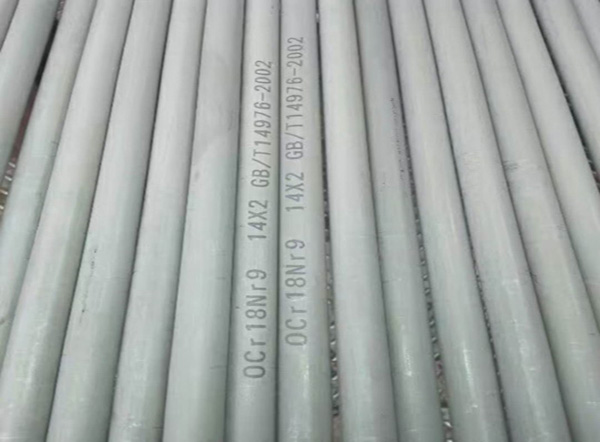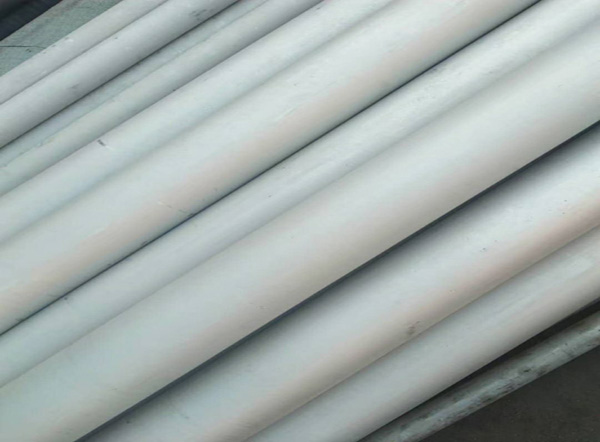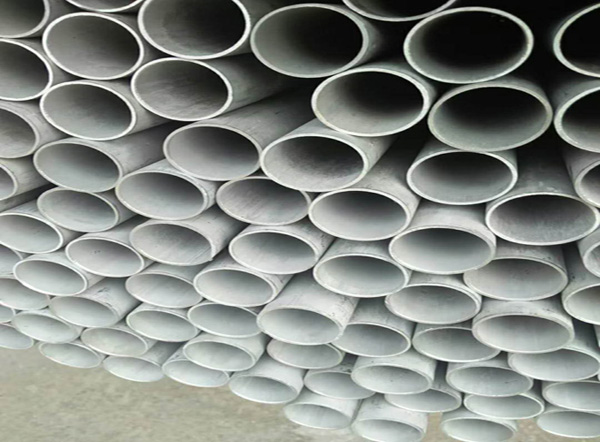Stainless Steel Materials And Grades
stainless steel material --metallic material
Historical origin
The invention and use of stainless steel dates back to world war I.British scientist Henry brealli was commissioned by the British government's military Arsenal to study the improvement of weapons.At that time, the rifles of the soldiers were very easy to wear, and Mr. Bralli wanted to develop a alloy that was not easy to wear.
Blair, the invention of stainless steel in 1916 the British patents and start mass production, at this point, from the stainless steel found in the dump is popular in the world, Henry cabral, also known as the "father" of stainless steel.In the first world war, the British guns in the field were always carried back to the rear because of the wear and tear of the gun.The military production department has ordered bralli to develop high-strength and wear-resistant alloy steel to study the wear problem of the gun.Mr Blair and his aides have collected in the production of various types of steel products at home and abroad, various properties of alloy steel, in a variety of different properties on the mechanical performance of the experiment, and then select the applicable made gun steel.One day, they tested a domestically produced with large amounts of chromium alloy steel, after abrasion experiment, discover this alloy is not wear-resisting, that can't manufacture guns, so, they recorded the experimental results, drop a corner.Months after one day, an aide ran with a piece of steel excitedly looking for Tony Blair said: "Sir, this is I found in the clean the warehouse from Mr Mullah alloy steel, do you test, to see what's so special it!""Good!""He said happily, looking at the bright steel.
The experiment proved that it is a stainless steel which is not afraid of acid, alkali and salt.The stainless steel was invented in Germany in 1912, but the mullahs did not know what the stainless steel was for.
"This kind of non-wear-resisting but corrosion-resistant steel can't make a gun. Can you make cutlery?"He dried it and made stainless steel fruit knives, forks, spoons, fruit plates and folding knives.

Main types
Stainless steel is usually divided into: martensitic steel, ferritic steel, austenitic steel, austenite - ferrite (double phase) stainless steel and precipitation hardening stainless steel.In addition, can be divided into: chromium stainless steel, chromium nickel stainless steel and chromium manganese nitrogen stainless steel.There is also special stainless steel for pressure vessel GB24511 _2009_ stainless steel plate and steel strip for pressure equipment.
Ferritic stainless steel.
Chromium is 15% ~ 30%.Its corrosion resistance, toughness and weldability increase with the increase of chromium content, and the corrosion resistance of the chloride is superior to other kinds of stainless steel, which belongs to Crl7, Cr17Mo2Ti, Cr25, Cr25Mo3Ti, Cr28, etc.Ferritic stainless steel because of the high chromium content, corrosion resistance and oxidation resistance are relatively good, but the mechanical properties and process performance is poorer, more used to stress less acid structure and steel used as antioxidant.This kind of steel to withstand atmosphere, nitric acid and corrosion of the brine solution, and has good high temperature oxidation resistance, low thermal expansion coefficient, etc, used in nitric acid and food factory equipment, also can make work under high temperature parts, such as gas turbine parts, etc.
Austenitic stainless steel.
Chromium is more than 18% and contains about 8% nickel and a small amount of molybdenum, titanium and nitrogen.Good comprehensive performance, can resist a variety of media corrosion.The common brand of austenitic stainless steel is 1Cr18Ni9, 0Cr19Ni9, etc.The Wc of 0Cr19Ni9 steel is <0.08%, and the steel number is marked as "0".This kind of steel contains a lot of Ni and Cr, which makes the steel at room temperature at austenite state.This kind of steel has good plasticity and toughness, weldability and corrosion resistance and non-magnetic or weak magnetic, the corrosion resistance in oxidizing and reducing medium are good, used to make acid equipment, such as corrosion resistant containers and equipment lining, pipelines, nitric acid resistant equipment parts, etc., also can be used as the main body of watches and clocks jewelry stainless steel material.Austenitic stainless steel with solid solution treatment, the steel heating to 1050 ~ 1150 ℃, then water-cooled or air-cooled, for single-phase austenitic organization
Austenitic ferrite duplex stainless steel.
Both austenitic and ferrite stainless steel have the advantages of superplasticity.Austenitic and ferritic tissues each account for about half of the stainless steel.In the case of low C, Cr content was 18%~28% and Ni content was 3%~10%.Some steel also contain Mo, Cu, Si, Nb, Ti, N and other alloy elements.This kind of steel both austenite and ferrite stainless steel, the characteristics of compared with ferrite, plasticity and toughness is higher, no room temperature brittleness, intergranular corrosion resistance and welding performance were significantly increased, while maintaining a ferritic stainless steel of 475 ℃ brittleness and high thermal conductivity, has the characteristics of superplasticity.Compared with austenitic stainless steel, high strength and corrosion resistance of intergranular corrosion and chloride stress corrosion have been improved obviously.Duplex stainless steel has excellent corrosion resistance and is also a kind of nickel stainless steel.
Stainless steel plate and steel strip for pressure equipment.
Special stainless steel pressure vessel, the classification and code, size, shape and allowable deviation, technical requirements, test methods, inspection rules, packaging, logo and have clear requirements such as certificate of product quality.The commonly used number is 06Cr19Ni10, 022Cr17Ni12Mo2 digital code: S30408, S31603, etc.Mainly used in food machinery, pharmaceutical machinery and other sanitary equipment.

The main features
weldability
The different requirements for welding performance are also different.A kind of tableware generally does not do the requirement to the welding performance, even includes partial boiler class enterprise.However, most products require good welding performance, such as type ii tableware, thermos cup, steel pipe, water heater, water dispenser and so on.
Corrosion resistance
The vast majority of stainless steel products for corrosion resistant performance is good, like a, 2 kinds of tableware, kitchen utensils and appliances, water heaters, water dispensers, etc., some foreign businessmen on corrosion resistance of products also do experiment: in NACL aqueous solution heated to boiling, after a period of time the best solution, wash and drying, weight loss, to determine the degree of corrosion (note: the product polishing, because of the sand cloth or sandpaper containing Fe, will cause the test surface rust spots)
Polishing performance
Nowadays, stainless steel products are generally polished in the process of production, and only a few products such as water heater and water dispenser are not required to be polished.Therefore, the polishing performance of raw materials is very good.The factors affecting the polishing
performance are as follows:
Material surface defects.Such as scratches, pitting, pickling, etc.
Material material problem.The hardness is too low, the polishing is not easy to be polished (BQ is not good), and the hardness is too low, and the surface of the surface is prone to the appearance of orange peel during deep drawing, thus affecting the BQ.The BQ with high hardness is relatively good.
In the case of deep drawing, small black spots and ridges will also appear on the surface of the region with large deformation, thus affecting the BQ.
Heat resistant performance
Heat resistance performance refers to the high temperature stainless steel can maintain its excellent physical and mechanical properties.
Carbon influence: carbon is strongly formed and stable in austenitic stainless steel.The elements of the austenite region are determined by the austenite.The ability of carbon to form austenite is about 30 times that of nickel. Carbon is an interstitial element, which can significantly improve the strength of austenitic stainless steel through solid solution strengthening.Carbon can also improve the resistance of austenitic stainless steel to high concentration chloride (e.g. 42%MgCl2 boiling solution).
But, in the austenitic stainless steel, carbon is often seen as the harmful elements, this is mainly due to the corrosion of stainless steel used in some conditions, such as welding or heating by 450 ~ 850 ℃), carbon steel with chromium in forming high chromium Cr23C6 type carbon compounds which can lead to local chromium depletion, make steel corrosion resistance especially resistant to intergranular corrosion performance degradation.So.Since the 60 s of the development of new cr-ni austenitic stainless steel is mostly carbon content less than 0.03% or 0.02% of the ultra-low carbon type, you can know as the carbon content is reduced, the steel intergranular corrosion sensitivity is reduced, when carbon content less than 0.02% is one of the most obvious effect, some experiments also pointed out that the carbon will also increase the chromium austenitic stainless steel corrosion tendency.Due to the harmful effect of carbon, not only in austenitic stainless steel smelting process should be controlled according to the requirement as far as possible low carbon content, and later in the hot, cold and heat treatment process is to prevent the stainless steel surface carburization, avoid chromium carbide precipitation.
Corrosion resistance
When the amount of chromium in steel is not lower than 12.5%, the electrode potential of the steel can be changed, and the negative potential will rise to the positive electrode potential.Prevent electrochemical corrosion.

Major product
Antibacterial stainless steel
Testing by the authority, antibacterial stainless steel on escherichia coli, staphylococcus aureus, the killing rate of over 99%, the other bacteria such as c. albicans, withered black fungus also has significant killing effect, show excellent antibacterial and antimicrobial durability.The tests conducted by the national institute of drugs and biological products show that antibacterial stainless steel meets national technical standards in terms of toxicity and human safety.In addition to the antibacterial properties of stainless steel, the mechanical properties, corrosion resistance, cold and heat processing, welding and other properties are the same as the original stainless steel.
The development of antibacterial stainless steel provides a wide space for the development of antibacterial products.The development potential of antibacterial stainless steel products is huge and the market prospect is very broad.Nowadays, many domestic manufacturers have expressed strong interest in antibacterial stainless steel, and the research group is actively seeking support to carry out the pilot test, so as to make the result of the product become a commodity at an early date.
Precipitation-hardened stainless steel.
With good forming performance and good weldability, it can be used in the nuclear industry, aviation and aerospace industry as the super strength material.
The components can be divided into Cr series (400 series), Cr-Ni series (300 series), Cr- mn-ni (200 series), heat-resistant chromium alloy steel (500 series) and precipitation hardening series (600 series).
200 series: chromium - manganese - nickel.
201,202, etc. : it is widely used as a cheap substitute for 300 series in China.
300 series: chrome-nickel austenitic stainless steel.
301. Malleable, used in molding products.It can also be quickly hardened by machining.Good weldability.Wear resistance and fatigue strength are superior to 304 stainless steel.
302: corrosion resistance and 304. Due to high carbon content, the strength is better.
303: by adding a small amount of sulfur and phosphorus, it is easier to machined by 304.
304: general model;18/8 stainless steel.Products such as: corrosion resistant containers, tableware, furniture, railings, medical equipment.The standard component is 18 % chromium plus 8 % nickel.Stainless steel which is not magnetic and cannot be changed by heat treatment to change its metallographic structure.GB is 0Cr18Ni9.
304 L: same as 304, but low carbon is more resistant to corrosion, easy to heat treatment, but less mechanical, suitable for welding and less heat-treated products.
304 N: same as 304, it is a nitrogen containing stainless steel, and nitrogen is added to improve the strength of steel.
309: compared with 304 has better temperature resistance, heat resistance up to 980 ℃.
309 S: it has a lot of chromium and nickel, so it has good heat resistance and oxidation resistance, and products such as heat exchangers, boiler zero components and jet engines.
310: the high temperature oxidation resistant performance is good, the highest temperature 1200 ℃.
316: after 304, the second to get the most widely used types of steel, mainly used in food industry, watches and clocks act the role ofing is tasted, the pharmaceutical industry and surgical equipment, add molybdenum elements make it get a kind of corrosion resistant special structure.Because it has better anti-chloride corrosion resistance than 304, it is also used as "Marine steel".SS316 is usually used for nuclear fuel recovery devices.Grade 18/10 stainless steel usually also fits this application level.
316 L: low carbon is more resistant to corrosion and heat treatment. Products such as chemical processing equipment, nuclear power generators and refrigerant storage are bad.
321: in addition to the risk that the titanium element is added to reduce the corrosion of the material weld, the other performance is similar to 304.
347: add the stabilizing element niobium, suitable for welding aviation equipment parts and chemical equipment.
400 series: ferrite and martensitic stainless steel, no manganese, can replace 304 stainless steel to some extent.
408: good heat resistance, weak corrosion resistance, 11% Cr, 8% Ni.
409: the cheapest model, commonly used as a car exhaust pipe, is a ferrite stainless steel (chrome steel).
410: martensite (high strength chromium steel), good wear resistance and less corrosion resistance.
416: adding sulfur improves the processing performance of the material.
420: "blade grade" martensitic steel, the earliest stainless steel, such as bushi high chromium steel.It is also used for surgical cutting tools, which can be very bright.
430: ferritic stainless steel, decorative, for example, for automotive accessories.Good molding, but low temperature resistance and corrosion resistance.
440: high strength cutting steel with slightly higher carbon content. After proper heat treatment, high yield strength can be obtained, and the hardness can reach 58HRC, which belongs to the hardest stainless steel column.The most common example of this is the razor blade.There are three common models: 440A, 440B, 440C, and 440F (easy to process).
500 series: heat-resistant chromium alloy steel.
600 series: martensitic precipitation hardening stainless steel.
Application field
In the field of building application, the surface processing of stainless steel is important for many reasons.The corrosive environment requires a smooth surface because the surface is smooth and does not scale easily.The deposition of dirt can rust or corrode the stainless steel.
In the spacious hall, the stainless steel is the most commonly used material of the elevator decorative board, the surface of the handprint can be rubbed off, but the influence is beautiful, so it is better to choose the appropriate surface to prevent leaving handprints.
Health condition is very important for many industries, for example, food processing, food, brewing, and chemical industry, etc., in these applications, the surface must be easy to clean every day, and often want to use chemical cleaning agents.
Stainless steel is the best material, in public places, the surface of the stainless steel and scribbled often, however, one of its important features is they can be washed off, this is a striking feature of stainless steel is better than that of aluminum.The surface of aluminum tends to leave traces, which are often difficult to remove.Cleaning stainless steel surfaces should be cleaned along the stainless steel lines, since some of the surface processing lines are unidirectional.
Stainless steel is the most suitable for vital areas of hospitals and other health conditions, such as: food processing, food, brewing, and chemical industry, not only because it is convenient for cleaning every day, sometimes the use of chemical cleaning agents, but also because it is not easy to breed bacteria.The test shows that the performance in this area is the same as that of glass and ceramics.
Previous: >> The comparsion table of stainless steel pipe & tube specification Next: >> Stainless Steel Standard Specification Reference List







